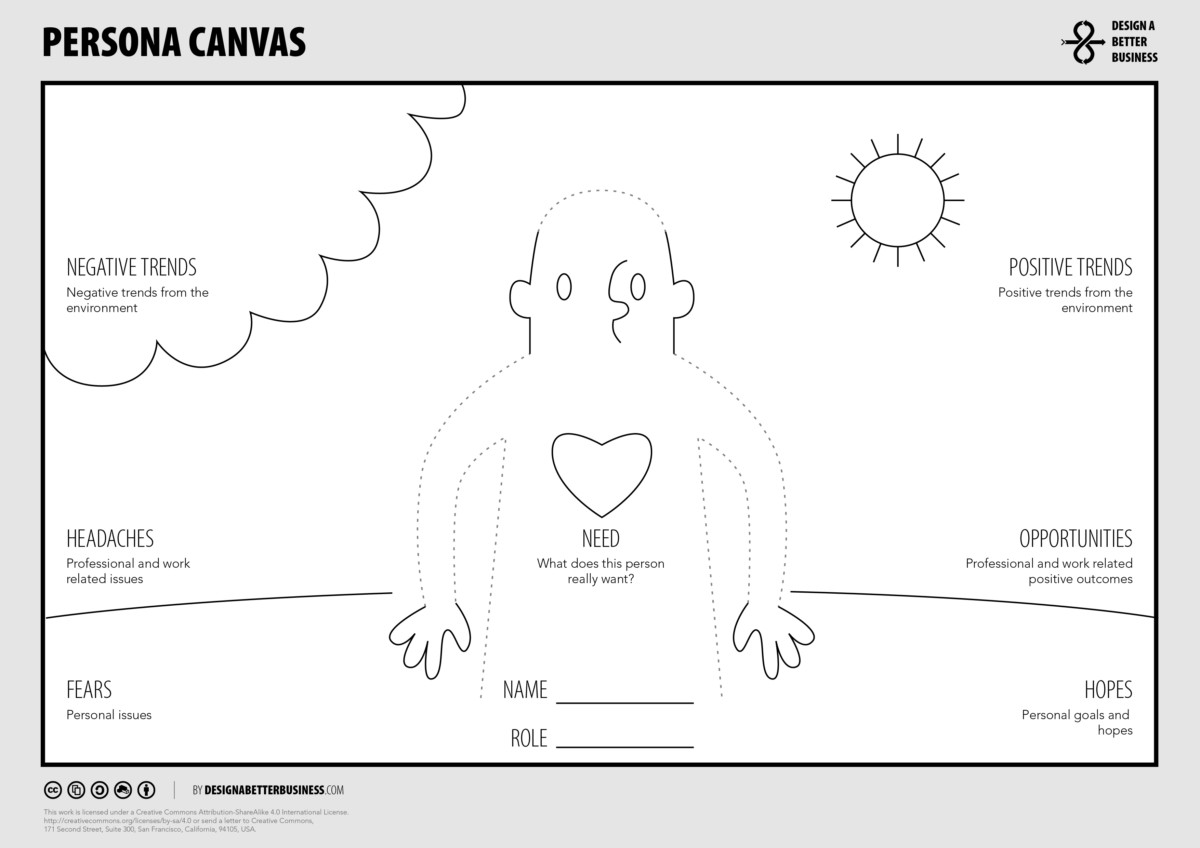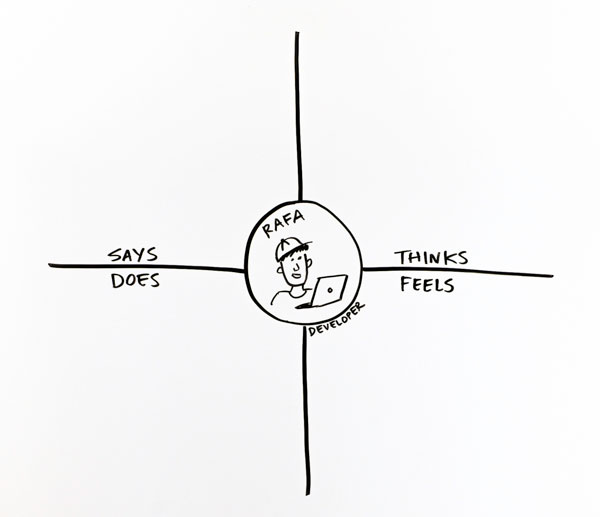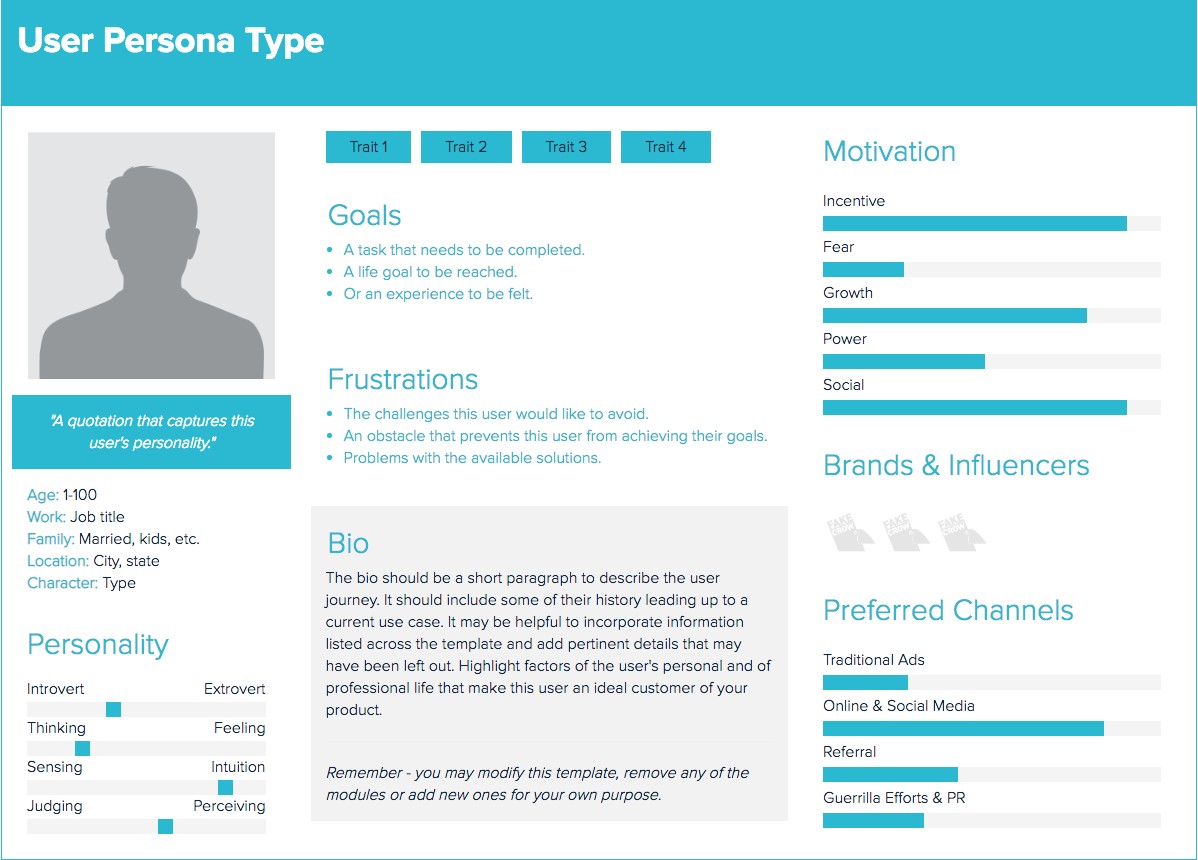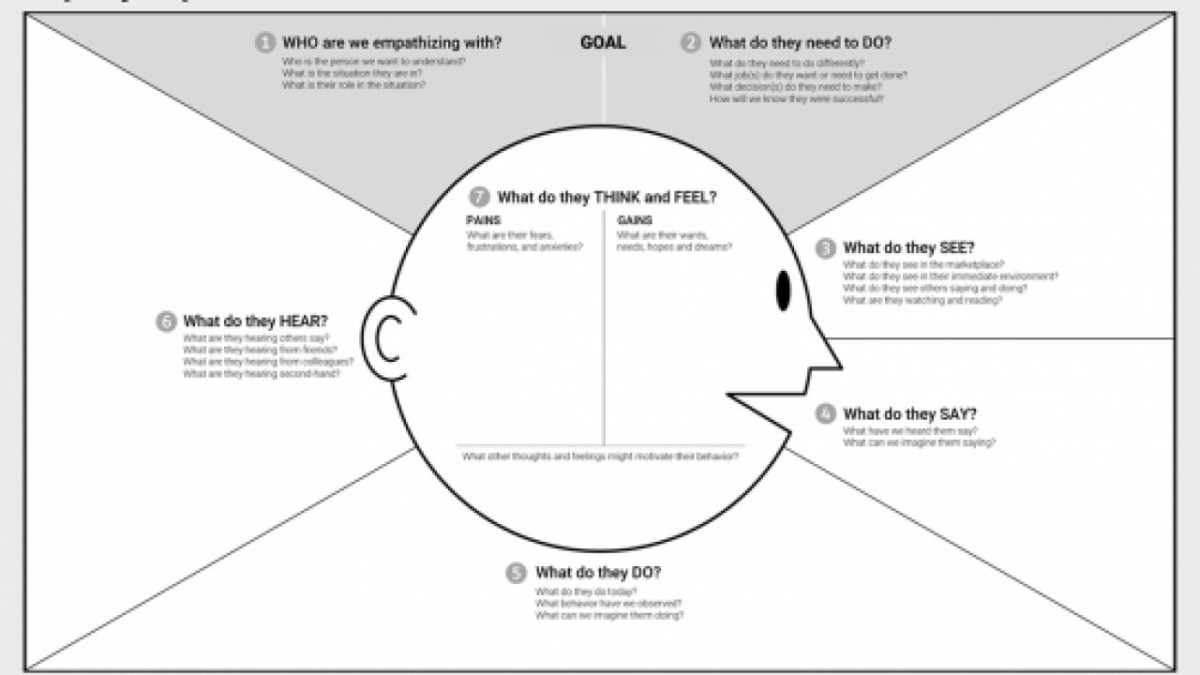The persona is an essential tool in Design Thinking, and its purpose is to help us define who exactly we are talking to.
During the Design Thinking process, we seek to solve a problem, whether it is for our clients or our team. We still need to define the profiles of the people for whom we are looking for a solution.
The persona is the key tool to get an overview of the profile for which we are looking to solve a problem.
Building a persona
We will mainly rely on the empathy phase of Design Thinking. Our goal is to identify the “typical” profile of our clients, by identifying their pains and their gains, and by creating from this two or three profiles that we call personae.
There are several formats of persona depending on the objectives of each. Below are two examples of personae, the first one proposed by DesignABetterBusiness.tools and the second one by IBM.


As you can see, the elements collected to establish these typical profiles differ quite widely.
Elements to define:
In general, we encourage you to define for your personas:
Demographic profile : age, gender, job type, etc.
Gains : How does our current product make the customer happy?
Pain : Why is our customer unhappy with our product?
Usage : How does our customer use our product? What need does our product meet?
Jobs-to-be-done : How could our product better fit our customer’s needs? How can we make up for our customer’s pain?
Beware ! Although we are tempted to define our profiles according to demographic conditions such as age, gender, or job type, the personas that emerge are not always relevant. We can for example try to create our different profiles based on their gains or pains, on their current or expected use of our solution for example.
What about the form ?
For the form of your persona, you are free to adopt the canvas that suits you best. We have already suggested two types of presentation. Here are some others to inspire you :


To learn more
Want to learn more about innovation methods? Take our Creative Problem Solving & Innovation Facilitator training.